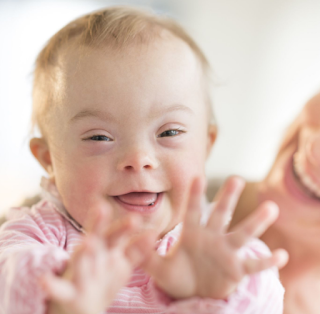Down Syndrome: Causes, Types, and Symptoms
What is Down syndrome?
Down syndrome (sometimes called Down syndrome) is a condition in which a child is born with an extra copy of his chromosome 21, hence its other name, trisomy 21. This causes delays and disabilities in physical and mental development.
Many of the disabilities are lifelong and can also shorten life expectancy. However, people with Down syndrome can lead healthy and fulfilling lives. Recent medical advances, as well as cultural and institutional support for people with Down syndrome and their families, provide many opportunities to help overcome the challenges of this condition.
In all cases of reproduction, both parents pass their genes on to their children. These genes are found on chromosomes. When the baby's cells develop, each cell is supposed to receive 23 pairs of chromosomes, for a total of 46 chromosomes. Half of the chromosomes are from the mother and half from the father.
In children with Down syndrome, one of the chromosomes does not separate properly. The baby ends up with three copies, or an additional partial copy, of chromosome 21, instead of two. This extra chromosome causes problems like the brain and physical characteristics develop.
According to the National Down Syndrome Society (NDSS), approximately 1 in 700 babies in the United States is born with Down syndrome. It is the most common genetic disorder in the United States.
There are three types of Down syndrome:
Trisomy 21
Trisomy 21 means that there is an extra copy of chromosome 21 in each cell. This is the most common form of Down syndrome.
Mosaicism
Mosaicism occurs when a child is born with an extra chromosome in some but not all of his cells. People with mosaic Down syndrome tend to have fewer symptoms than those with trisomy 21.
Translocation
In this type of Down syndrome, children only have an extra part of chromosome 21. There are 46 chromosomes in all. However, one of them has an extra piece of chromosome 21 attached to it.
Certain parents have a higher chance of giving birth to a child with Down syndrome. According to the Centers for Disease and Prevention, mothers age 35 and older are more likely to have a baby with Down syndrome than younger mothers. The probability increases the older the mother is.
Research shows that paternal age also has an effect. A 2003 study found that parents over 40 were twice as likely to have a child with Down syndrome.
Other parents who are more likely to have a child with Down syndrome include:
people with a family history of Down syndrome
carriers of the genetic translocation
It is important to remember that none of these factors mean that you will definitely have a baby with Down syndrome. However, statistically and in a large population, they can increase the chances that you can.
Although the probability of having a baby with Down syndrome can be estimated by screening during pregnancy, you will not experience any symptoms of having a child with Down syndrome.
At birth, babies with Down syndrome usually have certain characteristic signs, including:
- flat facial features
- head and small ears
- Short neck
- bulging tongue
- eyes that slant up
- atypically shaped ears
- poor muscle tone
- impulsive behavior
- lack of criteria
- short attention span
- slow learning abilities
- congenital heart defects
- hearing loss
- Bad vision
- cataracts (cloudy eyes)
- hip problems, such as dislocations
- leukemia
- chronic constipation
- sleep apnea (interrupted breathing during sleep)
- dementia (thinking and memory problems)
- hypothyroidism (low thyroid function)
- obesity
- late growth of teeth, causing problems chewing
- Alzheimer's disease later in life
- Amniocentesis. Your doctor takes a sample of amniotic fluid to check the number of chromosomes your baby has. The test is usually done after 15 weeks.
- Chorionic villus sampling (CVS). Your doctor will take cells from your placenta to analyze the fetal chromosomes. This test is done between the ninth and fourteenth week of pregnancy. It can increase the risk of a miscarriage, but according to the Mayo Clinic, only by less than 1 percent.
- Percutaneous umbilical blood sampling (PUBS or cordocentesis). Your doctor will take blood from the umbilical cord and examine it for chromosomal defects. It is done after the 18th week of pregnancy. You have an increased risk of miscarriage, so it is done only if all other tests are uncertain.
- perform a physical exam of your baby
- order a blood test called a karyotype to confirm Down syndrome
- sensory skills
- social skills
- self-help skills
- motor skills
- cognitive and language skills












Comments